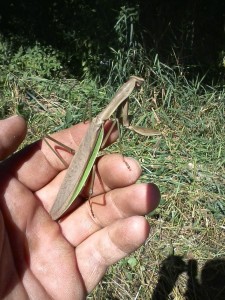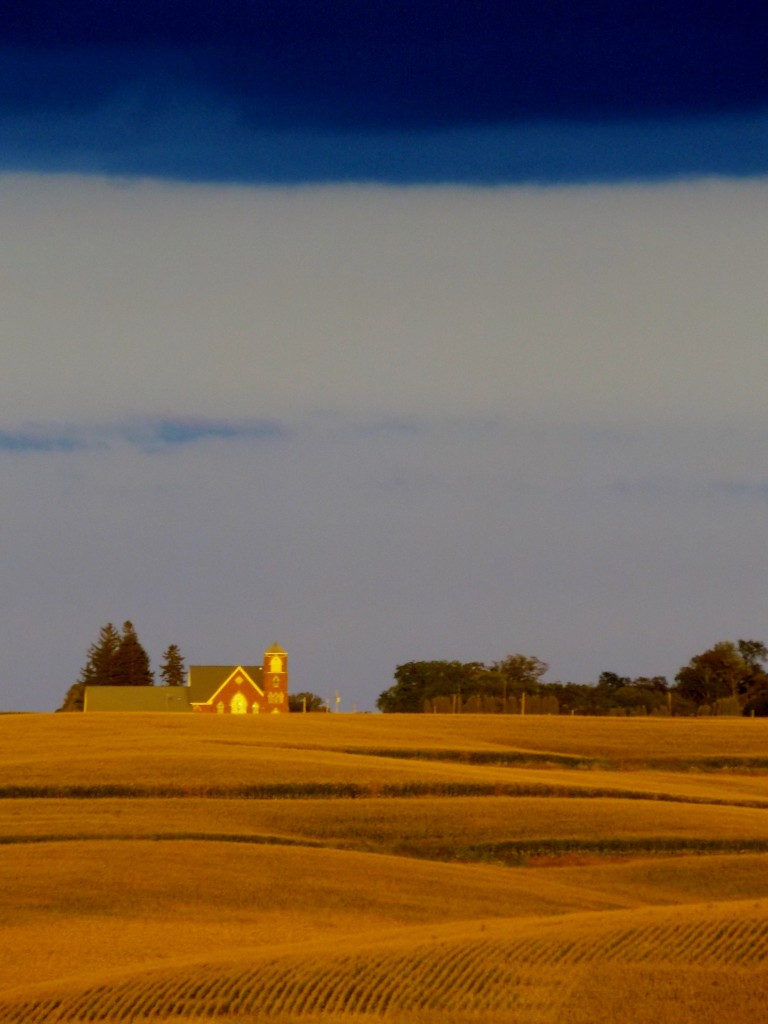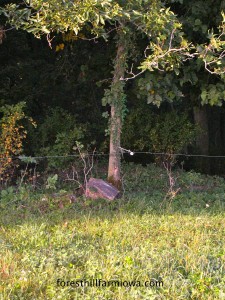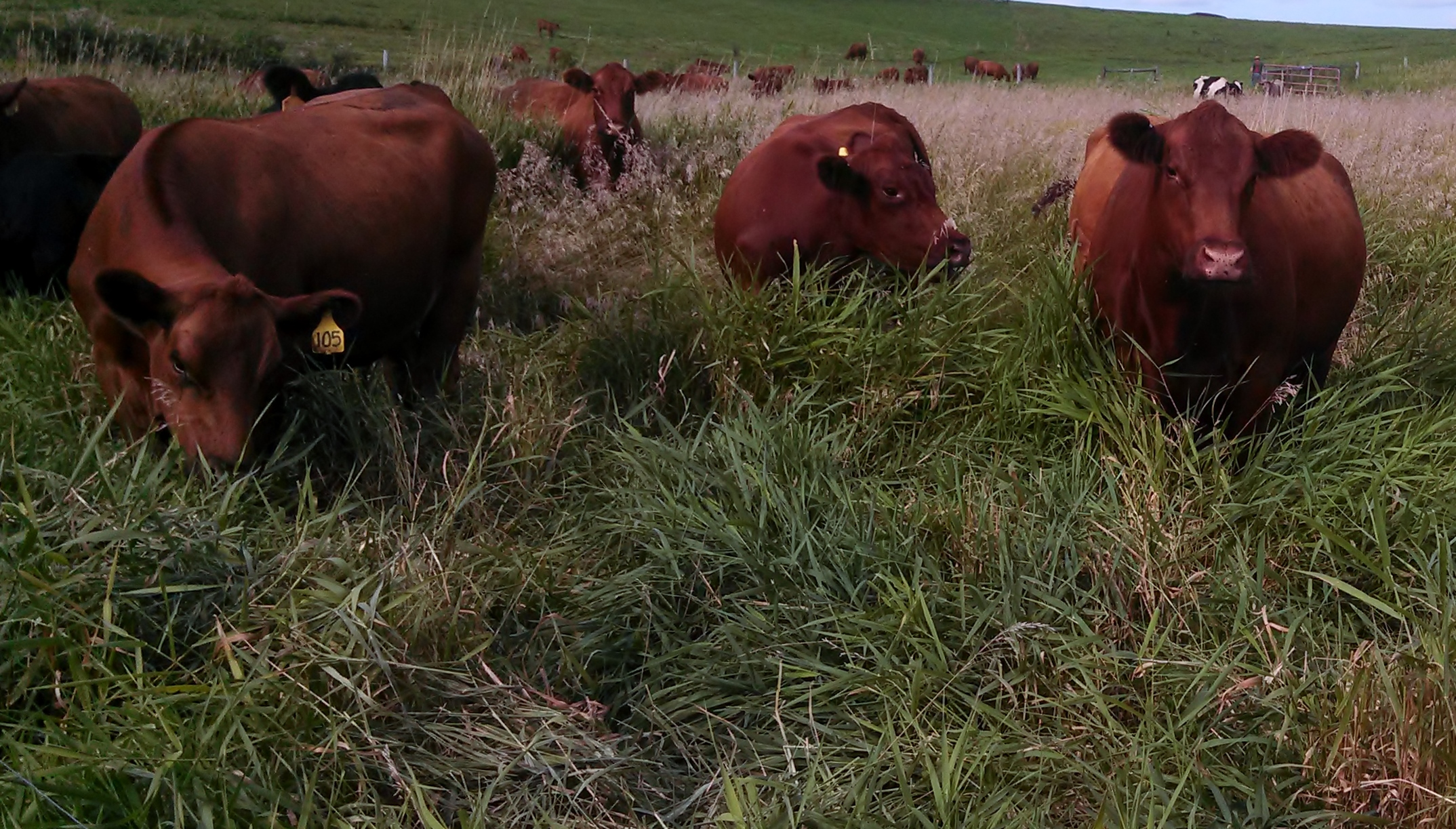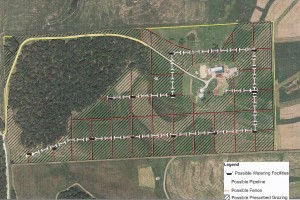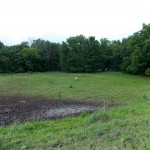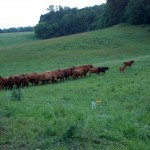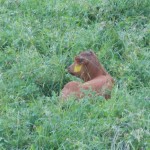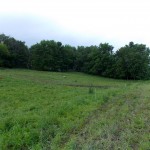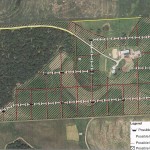On an old oak stump in our front yard grew a Hen of the Woods mushroom. Keith would watch it grow and mature until it was the ready to pick. It was just about perfect.
We were sitting on the front porch when a car pulled up. The dogs were sleeping in the autumn sun, they didn't notice. The driver ran from the car, cut the mushroom, and drove off.
Apparently someone else was watching the mushroom, too. Keith walked around the stump in disbelief, “Who steals a mushroom?”
“Probably the same type of person who tries stuffing a goat into the hatchback of their car.” A few weeks earlier a nicely dressed couple tried driving off with our goat, Midnight and a few of the laying hens.
Poor Keith, I empathized with him. He'd been waiting to enjoying this mushroom for a long time.
Our neighbor, Mike watched the same car pull up to his ditch and cut weed stalks early each summer. One year he flagged them down to ask what they were cutting. What they thought were wild rhubarb stalks in reality was Burdock. Mike just smiled, shook his head and waved them on. He loved re-telling that story.
Here in Iowa folks park along the roadside searching for wild asparagus or morels. The asparagus seekers carry sharp knives and plastic bags. They walk along the ditches and fence rows searching the grass around utility poles.
For some reason the commercial morel hunters irritate me, they don't ask for permission, they're dropped off in an area to begin scavenging the timber and underbrush for saleable product. They wear camouflage and carry handheld GPS devices. Morel's bring a hefty price.
Growing mushrooms is one of our latest projects. We're growing Oyster mushrooms for fun. Keith loves mushrooms. One year I bought him a shiitake growing kit which was fine, but about the difference between owning a plastic model of a Corvette or the real thing.
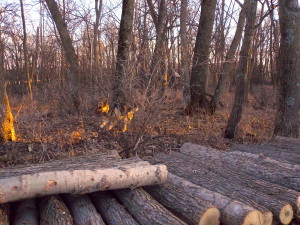 It was time for an up-grade, so this year we're growing two varieties of organic Oyster mushrooms; Grey Dove and PoHu.
It was time for an up-grade, so this year we're growing two varieties of organic Oyster mushrooms; Grey Dove and PoHu.
Keith cut logs from dormant Aspen trees. Each log is about 3 feet long, 6 – 8 inches in diameter. There are about one hundred logs for this year's mushroom project. He used a special bit to drill the holes. Cookie inoculated the logs with sawdust spawn and then capped each with wax. The logs are stacked in the timber, when it's dry this summer we'll use a water tank to soak the logs. The first mushrooms should start growing within a few months. This first year's yield will be sparse, but should increase each season for many years.

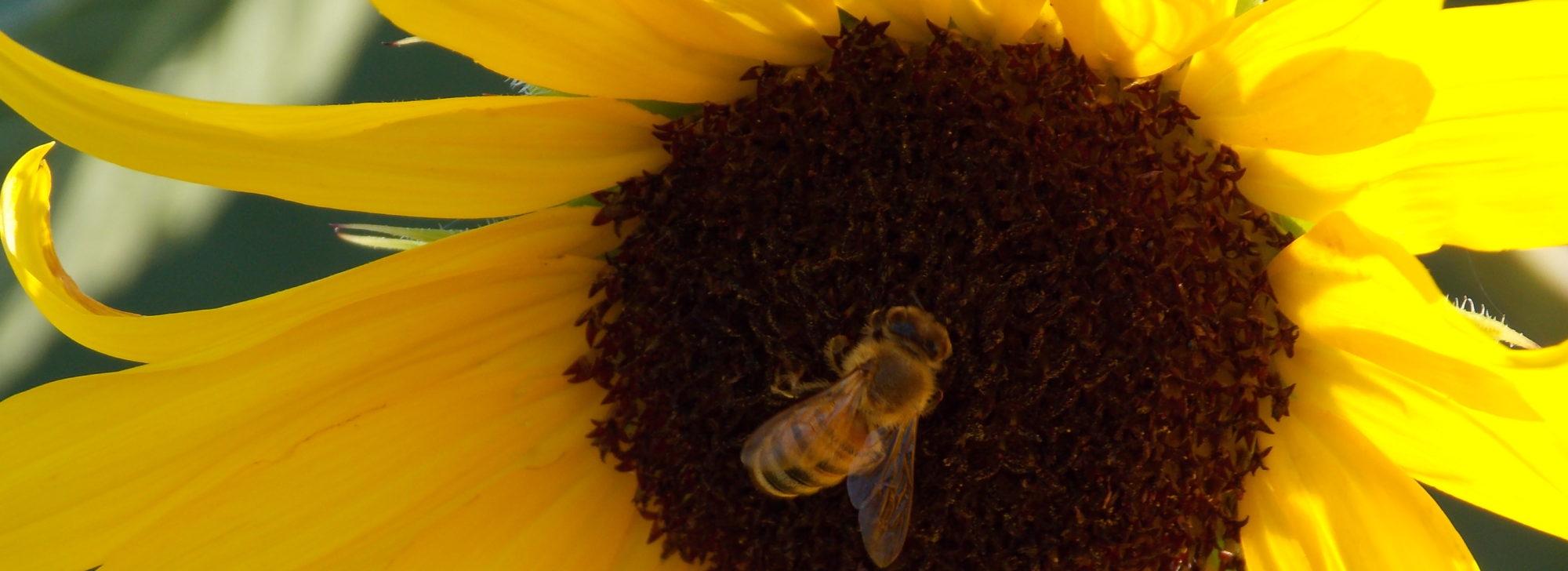
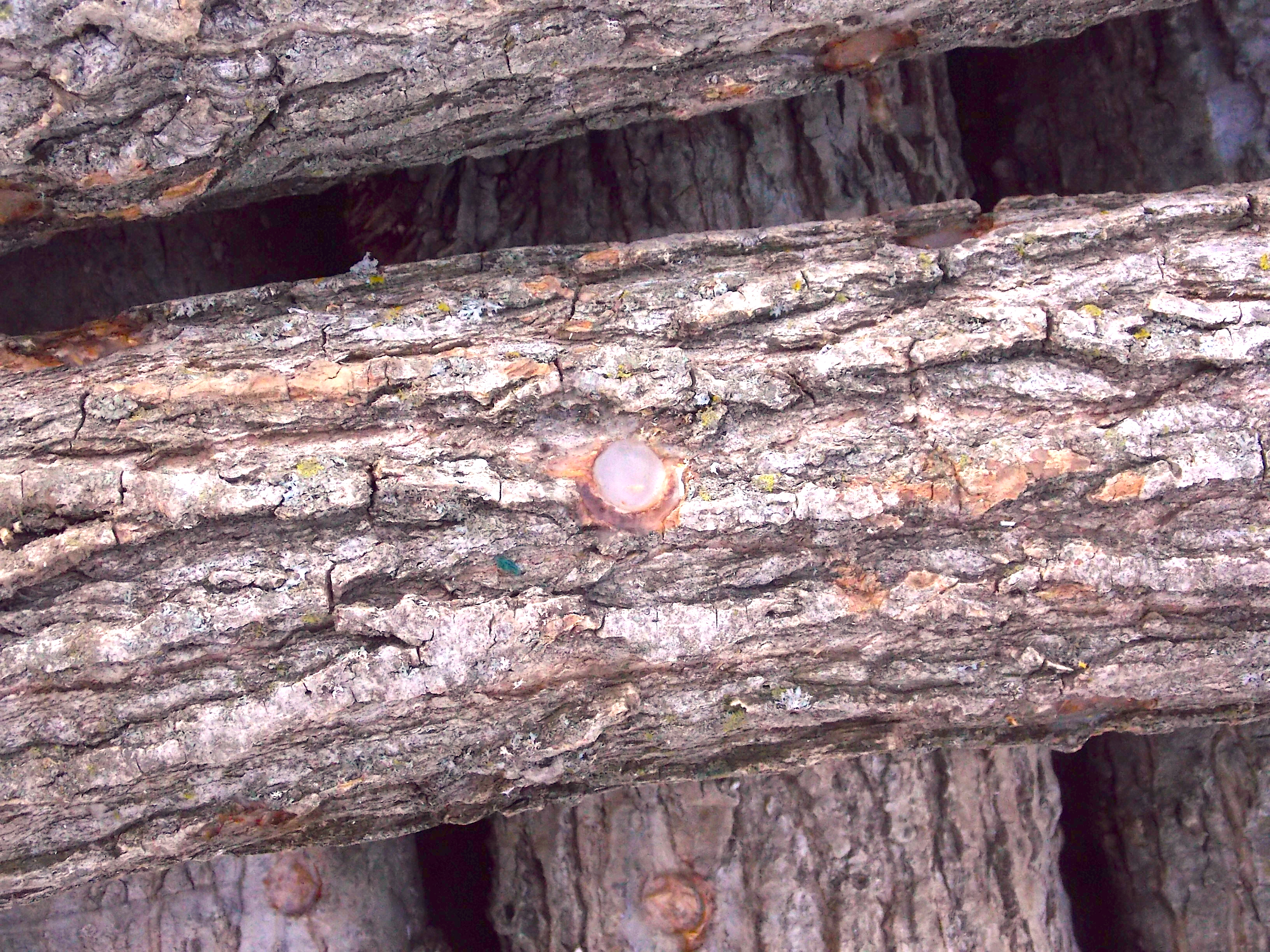


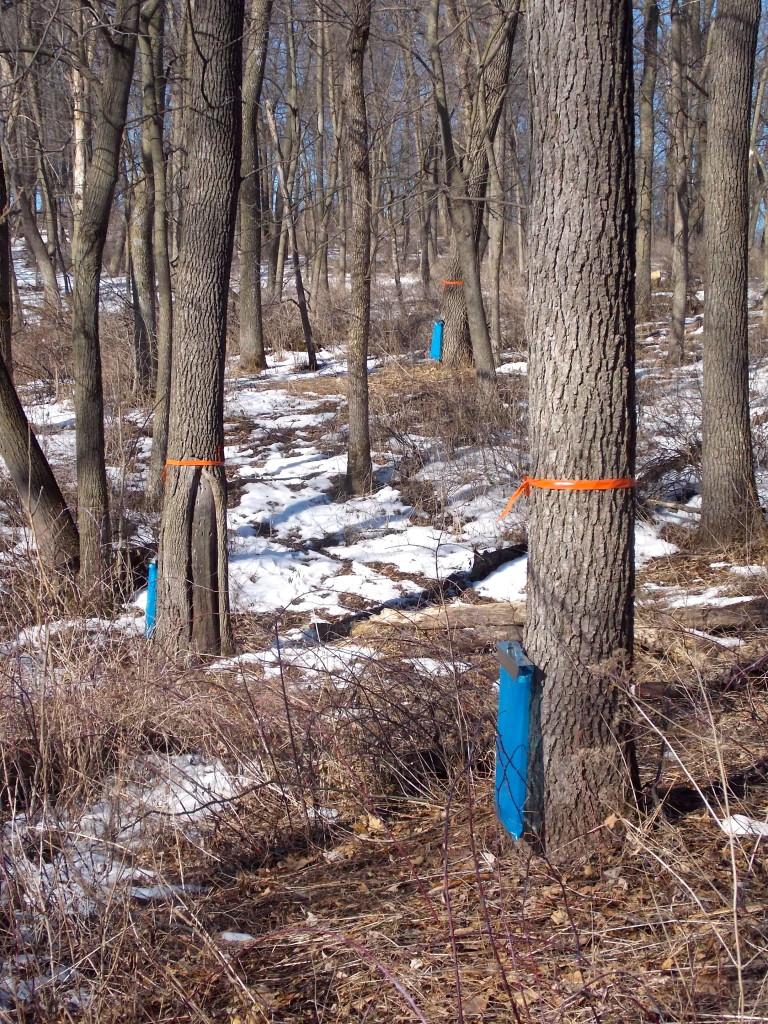

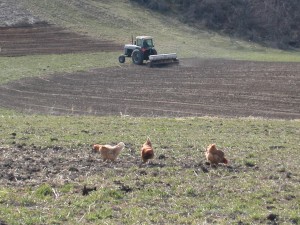 A few years ago, when we were still living in Illinois, the planting season started as soon as the snow cover was gone, or so it seemed, anyway. The land was flat, it warmed up quickly and dried fast
A few years ago, when we were still living in Illinois, the planting season started as soon as the snow cover was gone, or so it seemed, anyway. The land was flat, it warmed up quickly and dried fast
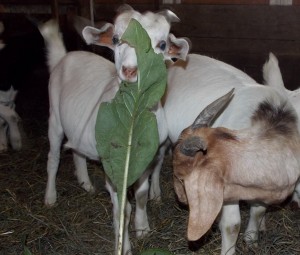
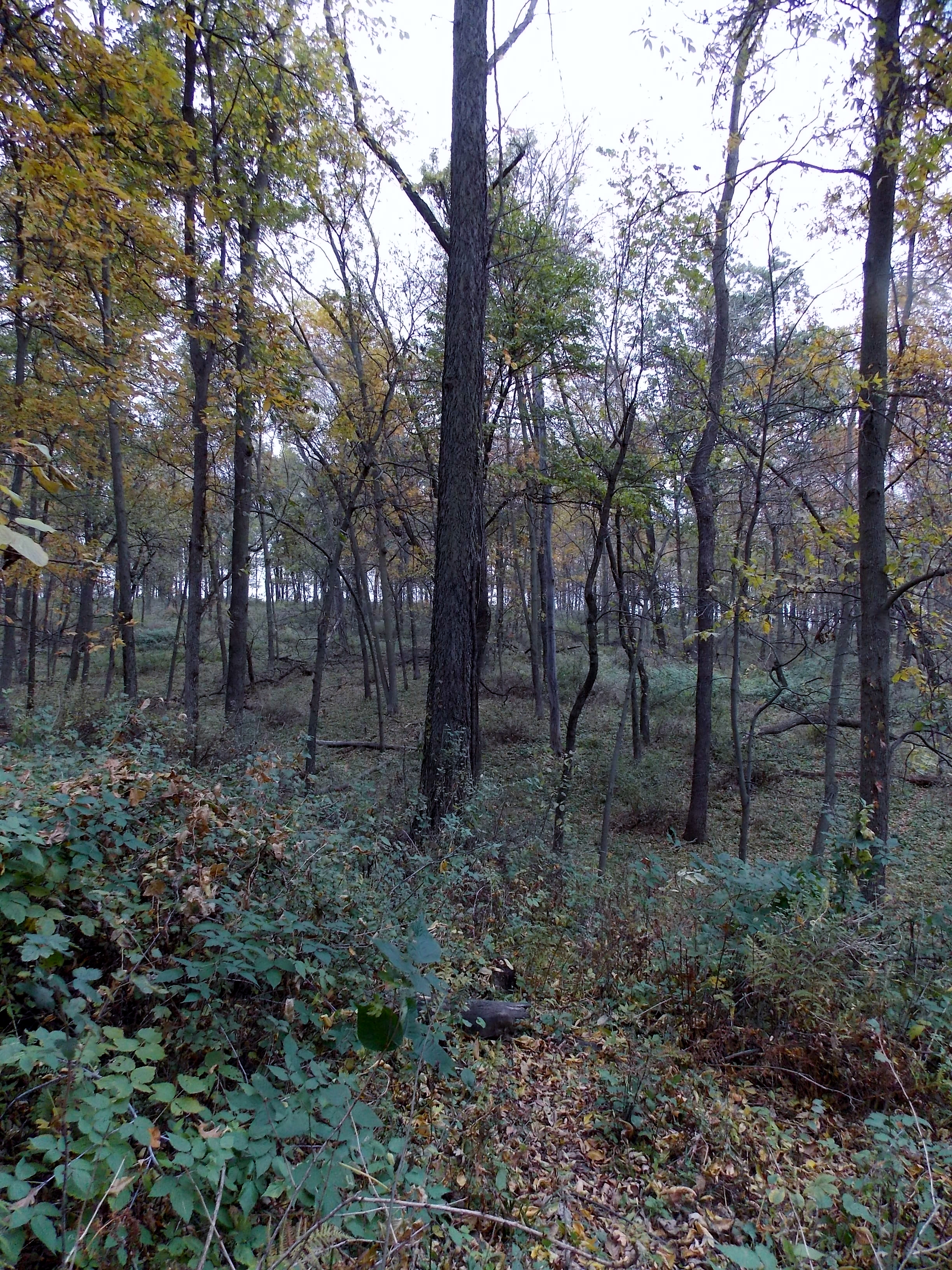
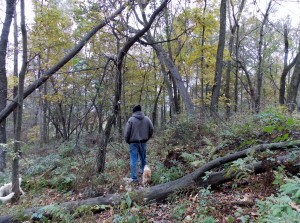 On our regular walk through the timber Keith and I noticed signs of the changing season. The color change of the leaves is obvious, but there are subtle signs, too. The wooly bear caterpillar's color range of reddish-brown to black is an indicator of the severity of the coming winter, if you believe the folklore. According to The Farmer's Almanac the legend is; the wider that middle brown section is (i.e., the more brown segments there are), the milder the coming winter will be. Conversely, a narrow brown band is said to predict a harsh winter.
On our regular walk through the timber Keith and I noticed signs of the changing season. The color change of the leaves is obvious, but there are subtle signs, too. The wooly bear caterpillar's color range of reddish-brown to black is an indicator of the severity of the coming winter, if you believe the folklore. According to The Farmer's Almanac the legend is; the wider that middle brown section is (i.e., the more brown segments there are), the milder the coming winter will be. Conversely, a narrow brown band is said to predict a harsh winter. Maisy and Spike are staking out hollow trees looking for raccoon and opossum. Spike cornered a momma coon, at our urging he backed down, she wouldn't have.
Maisy and Spike are staking out hollow trees looking for raccoon and opossum. Spike cornered a momma coon, at our urging he backed down, she wouldn't have.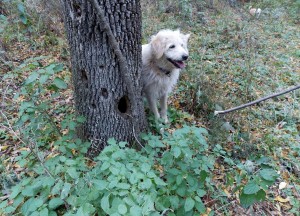
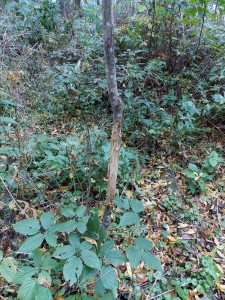 The canopy overhead is sparse now. The natural windbreak of the ravines shows signs where deer have bedded down for the night. Young trees have fresh rubs where bucks are marking their territory. We've seen large bucks in the timber and larger gatherings of
The canopy overhead is sparse now. The natural windbreak of the ravines shows signs where deer have bedded down for the night. Young trees have fresh rubs where bucks are marking their territory. We've seen large bucks in the timber and larger gatherings of 
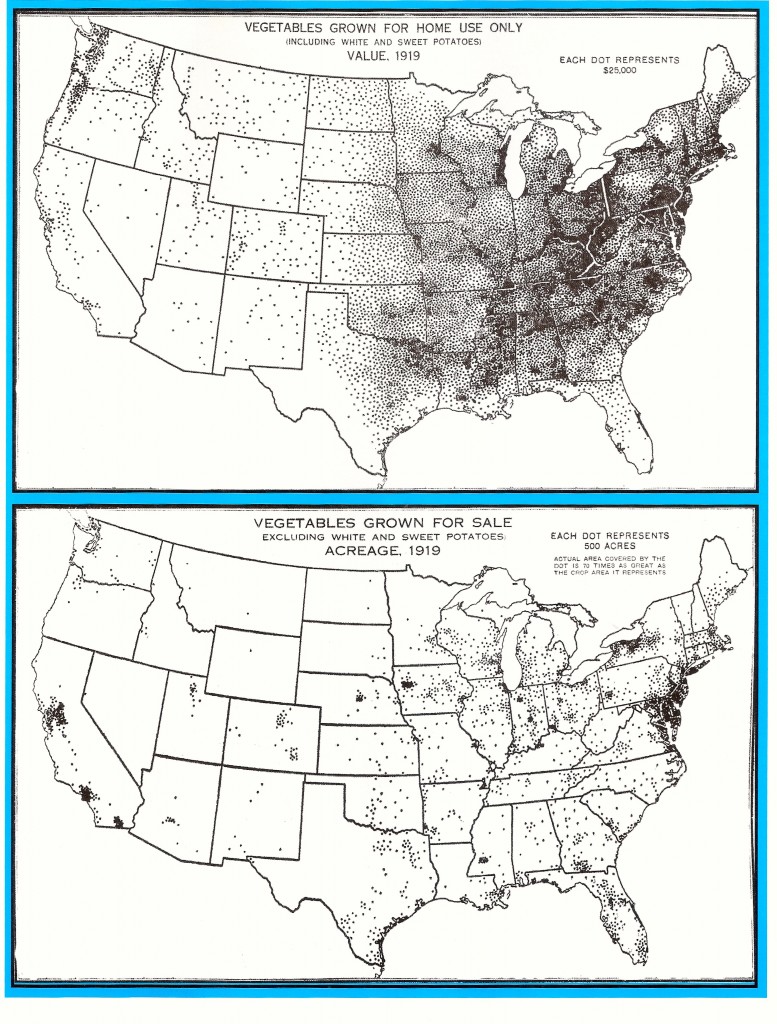 You can't get more local than your own backyard. This is the time of year to start planning for next year's garden. Cover crops of green manure ( buckwheat, annual rye grass, clover, etc.) should be planted now. They'll add nutrients, aerate the soil, fix nitrogen, and feed the microbial life of the soil. Adding chopped leaves, from deep rooted trees, will
You can't get more local than your own backyard. This is the time of year to start planning for next year's garden. Cover crops of green manure ( buckwheat, annual rye grass, clover, etc.) should be planted now. They'll add nutrients, aerate the soil, fix nitrogen, and feed the microbial life of the soil. Adding chopped leaves, from deep rooted trees, will 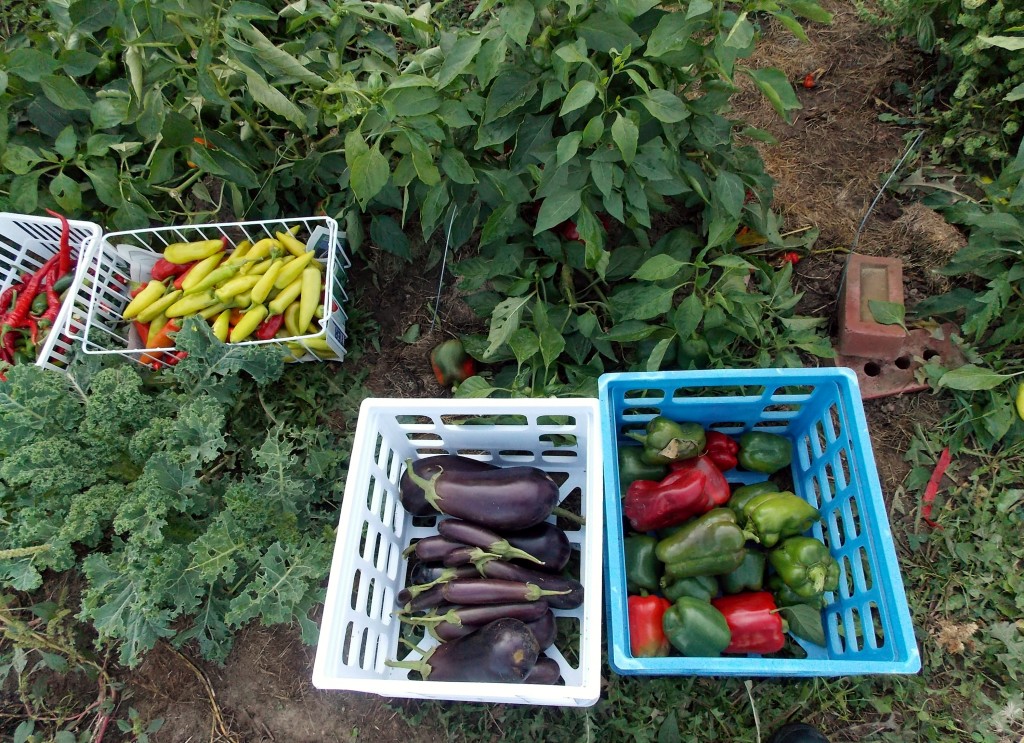
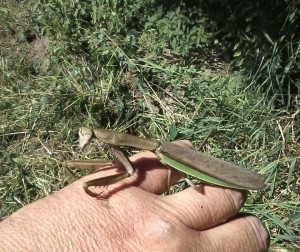 Keith came into the house wearing his work boots, as a general rule we don't wear work boots in the house. I thought he must have something very important needing immediate attention. He was carrying his phone and asked if I could guess what he found in the tall grass. Since I've lost a fence post pounder, and a collection of other tools, over the years, I figured he'd found one of them with the hay mower. Luckily, that wasn't it.
Keith came into the house wearing his work boots, as a general rule we don't wear work boots in the house. I thought he must have something very important needing immediate attention. He was carrying his phone and asked if I could guess what he found in the tall grass. Since I've lost a fence post pounder, and a collection of other tools, over the years, I figured he'd found one of them with the hay mower. Luckily, that wasn't it.